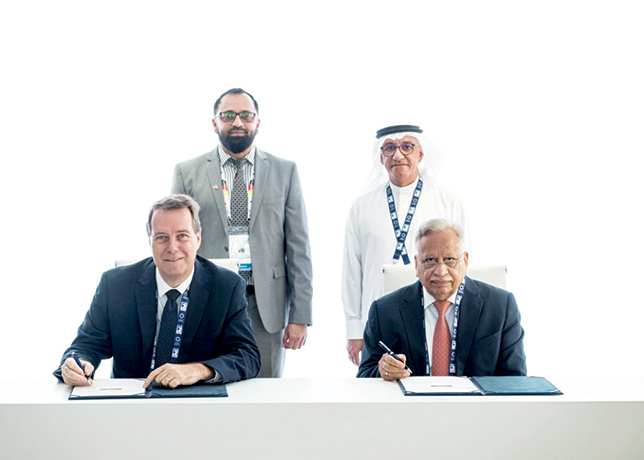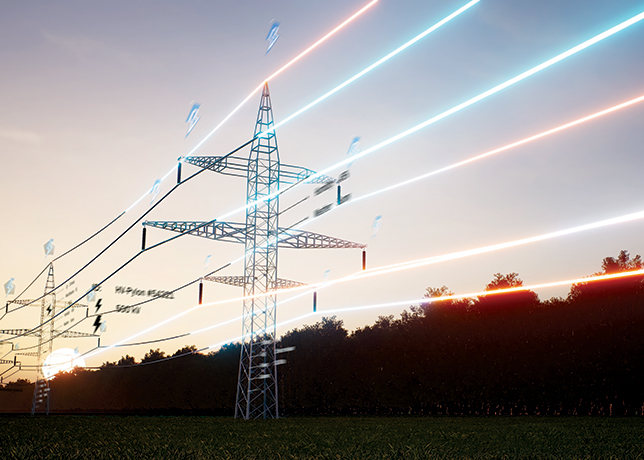
 Hesham El Shamy
Hesham El Shamy
The WB’s report on gas flaring serves as a glaring reminder of the work that lies ahead, but also as a call to action to accelerate efforts towards a more sustainable and efficient energy future, says Hesham El Shamy, Head of Oil & Gas - Aggreko AMEA
The latest Global Gas Flaring Tracker Report has unveiled a disturbing trend in global gas flaring practices, emphasising the urgent need for change to mitigate its growing impact on our planet.
In 2023, gas flaring surged by nine billion cu m (bcm) to reach a staggering 148 bcm globally, releasing approximately 381 million tonnes of carbon dioxide equivalents (CO2e) – the highest level observed since 2019.
This alarming increase in gas flaring is equivalent to adding five million cars to the world's roads, painting a stark picture of the environmental consequences.
The 7 per cent rise from 2022 to 2023 represents a troubling reversal of the reduction trend observed between 2021 and 2022, raising significant concerns among environmental experts, policymakers, and industry leaders alike.
Nine countries, including the Russian Federation, Iraq, the US, Algeria, Libya, Nigeria, and Mexico, are responsible for a disproportionate 75 per cent of the world's gas flaring while only accounting for 46 per cent of oil production.
This imbalance underscores the need for targeted action in these regions to address the issue effectively and reduce global emissions.
The impact of this increased gas flaring extends far beyond mere numbers.
The volume of gas flared in 2023 is sufficient to double the energy supply currently available to the entire sub-Saharan Africa.
This comparison highlights the immense potential for positive change if gas flaring practices were better managed and the resources harnessed more effectively.
 |
Gas flared in 2023 is sufficient to double the energy supply to sub-Saharan Africa |
The World Bank's Zero Routine Flaring by 2030 initiative aims to eliminate non-emergency flaring, potentially reducing flared gas volumes by up to 95 per cent.
This ambitious goal, if achieved, would mark a significant milestone in the fight against climate change and resource waste.
Innovative solutions, such as flare-to-power technologies, offer a sustainable alternative that can harness the energy potential of flared gas while addressing environmental concerns.
These technologies present an opportunity to transform what has traditionally been viewed as a waste product into a valuable energy resource.
By capturing and utilising flared gas, companies can generate electricity, improving their energy efficiency and significantly reducing their environmental footprint.
The concept of flare-to-power is particularly promising because it addresses multiple challenges simultaneously.
First, it reduces the direct environmental impact of flaring by decreasing the amount of greenhouse gases released into the atmosphere.
Second, it turns a waste product into a useful resource, improving overall energy efficiency.
Third, it can provide a reliable source of power at optimum total cost of energy (TCOE) in regions where energy access is limited, contributing to economic development and improved quality of life.
However, the widespread adoption of flare-to-power solutions faces several challenges.
Many companies lack the necessary infrastructure to capture and utilise flared gas effectively.
The initial investment required for such infrastructure can be substantial, and without clear economic incentives, many operators have been hesitant to make this commitment.
Additionally, the reliability of flared gas as a power source has been a concern.
Gas flaring isn't always consistent, as it depends on various factors in oil production, making it challenging to rely on as a primary energy source.
Despite these challenges, the potential benefits of addressing gas flaring are too significant to ignore.
The environmental impact alone justifies serious action, but the economic and social benefits add further weight to the argument for change.
Moreover, as global pressure mounts to address climate change, companies that take proactive steps to reduce their emissions and improve their environmental performance are likely to gain competitive advantages.
This could come in the form of improved public perception, better relationships with regulators, and potentially even premium pricing for more sustainably produced oil and gas.
The path forward requires a multi-faceted approach.
While initiatives like Zero Routine Flaring by 2030 provide important goals and frameworks, practical solutions are needed to bridge the gap between current practices and these ambitious targets. This is where innovative technologies and services come into play.
Companies like Aggreko offers a range of solutions designed to address the challenges of gas flaring while capitalising on its potential benefits. These include:
• Scalable solutions: As gas volumes fluctuate, phased reductions or proactive scaling-up processes could be introduced to ensure a controlled transition and optimal utilisation of resources.
• Real-time gas analysis and engineering capabilities: Cutting-edge solutions provide insights into gas composition, ensuring a consistent and qualified gas supply for power generation.
• Bespoke engineering: Solutions can be customised to match individual needs, providing full turnkey solutions with industry-leading reliability and the highest safety standards.
• Expertise in challenging environments: With experience in extreme conditions from the cold North to the searing heat of the Middle East, Aggreko has successfully implemented APG/Flare to Power projects globally.
• Commercial flexibility: Whether you want to buy energy as a service, have the option to purchase the power plant at the end of the contract or want to explore third party financing – Aggreko can be your trusted energy partner.
• Proven track record: Aggreko has installed over 1 GW of installed capacity for projects using Associated Petroleum Gas (APG) as fuel for customer projects worldwide.
CONCLUSION
As the world grapples with the urgent need to address climate change, innovative solutions like those offered by Aggreko play a crucial role in transforming harmful practices into sustainable opportunities.
By embracing these technologies, the oil and gas industry can significantly contribute to global efforts to reduce emissions while optimising their operations for a more sustainable future.
The journey towards zero routine flaring is complex and challenging, but with the right technologies, partnerships, and commitment, it is achievable.
Companies like Aggreko are paving the way for a future where gas flaring is no longer a necessary evil, but rather an opportunity for sustainable energy production and environmental stewardship.
As the worlds moves forward, it is crucial for governments, industry leaders, and technology providers to work together in addressing the gas flaring challenge.
By combining policy initiatives, technological innovations, and industry best practices, the world can turn the tide on gas flaring and its environmental impact.
The latest Global Gas Flaring Tracker Report serves as a glaring reminder of the work that lies ahead, but also as a call to action for all stakeholders to accelerate efforts towards a more sustainable and efficient energy future.
By Abdulaziz Khattak









































































